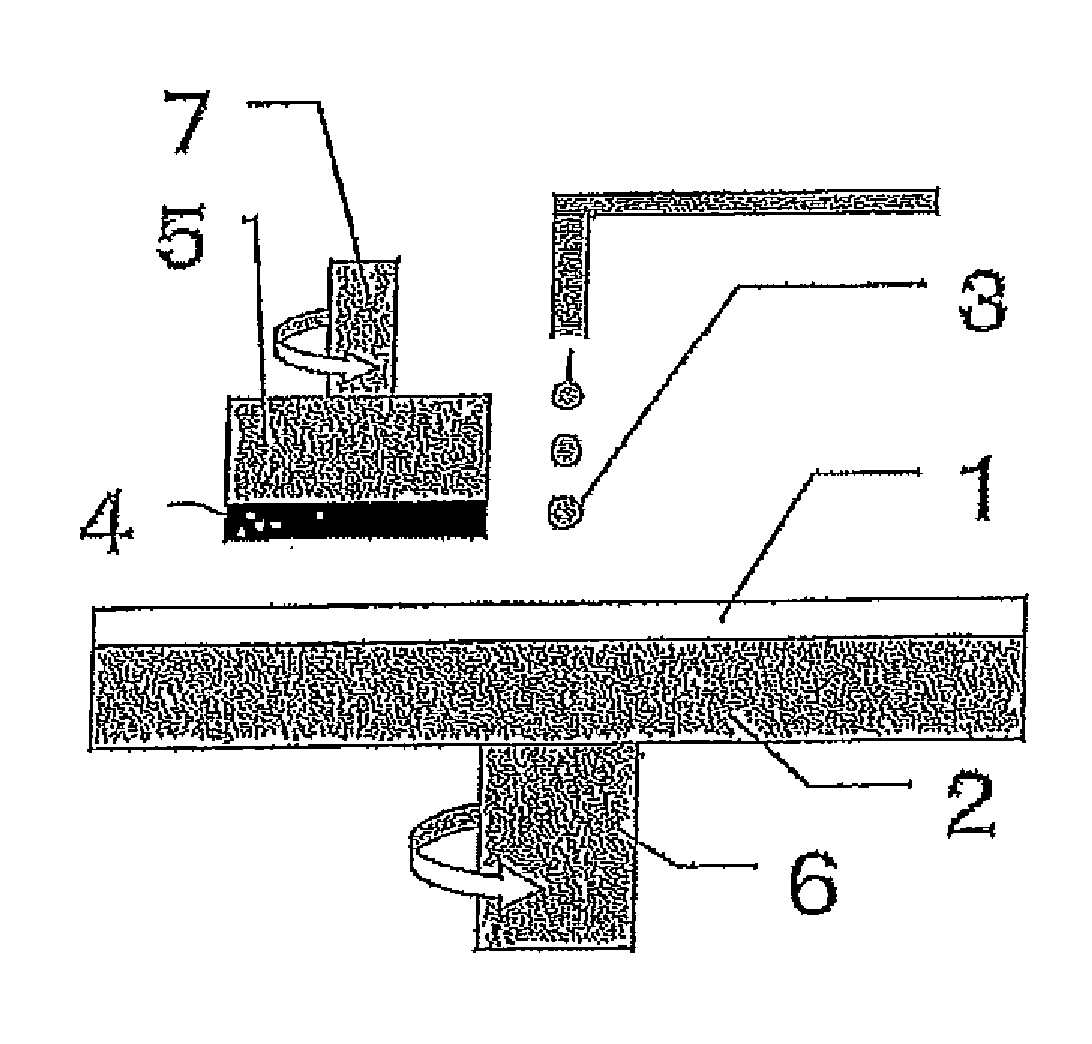Polishing pad
a technology of polishing pads and pads, which is applied in the field of polishing pads, can solve the problems of scratches (scars) more likely to occur on the surface of the material being polished, and achieve the effect of shortening the life of the polishing pad and reducing the wear resistan
- Summary
- Abstract
- Description
- Claims
- Application Information
AI Technical Summary
Benefits of technology
Problems solved by technology
Method used
Image
Examples
example 1
[0105]To a vessel were added 259 parts by weight of toluene diisocyanate (a mixture of 2,4-diisocyanate / 2,6-diisocyanate=80 / 20) and 741 parts by weight of polyethylene adipate glycol with a number average molecular weight of 1,000 and allowed to react at 70° C. for 4 hours, so that an isocyanate-terminated prepolymer (A) was obtained.
[0106]To a vessel were added 392 parts by weight of toluene diisocyanate (a mixture of 2,4-diisocyanate / 2,6-diisocyanate=80 / 20), 88 parts by weight of isophorone diisocyanate, 53 parts by weight of polytetramethylene ether glycol having a number average molecular weight of 2000, 106 parts by weight of polytetramethylene ether glycol having a number average molecular weight of 1000, 103 parts by weight of polytetramethylene ether glycol having a number average molecular weight of 650, and 258 parts by weight of polytetramethylene ether glycol having a number average molecular weight of 250, and the mixture was allowed to react at 70° C. for 4 hours, so t...
PUM
| Property | Measurement | Unit |
|---|---|---|
| Length | aaaaa | aaaaa |
| Percent by mass | aaaaa | aaaaa |
| Percent by mass | aaaaa | aaaaa |
Abstract
Description
Claims
Application Information
 Login to View More
Login to View More - R&D
- Intellectual Property
- Life Sciences
- Materials
- Tech Scout
- Unparalleled Data Quality
- Higher Quality Content
- 60% Fewer Hallucinations
Browse by: Latest US Patents, China's latest patents, Technical Efficacy Thesaurus, Application Domain, Technology Topic, Popular Technical Reports.
© 2025 PatSnap. All rights reserved.Legal|Privacy policy|Modern Slavery Act Transparency Statement|Sitemap|About US| Contact US: help@patsnap.com



